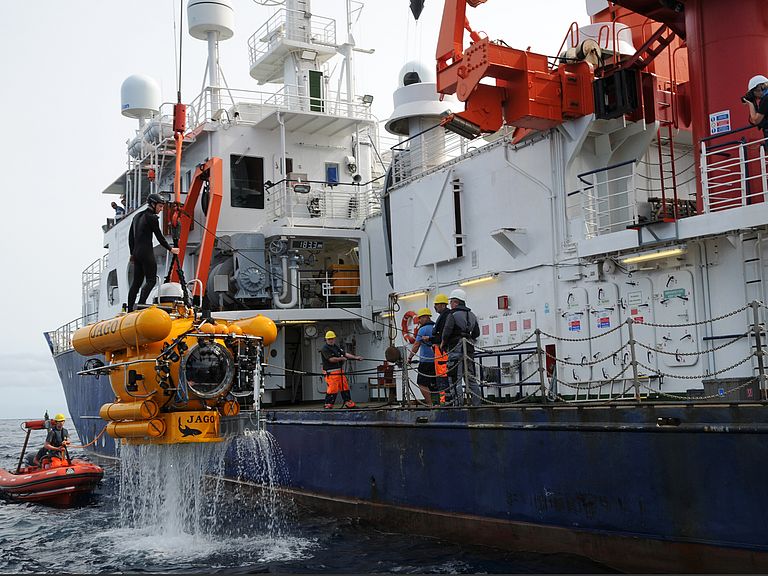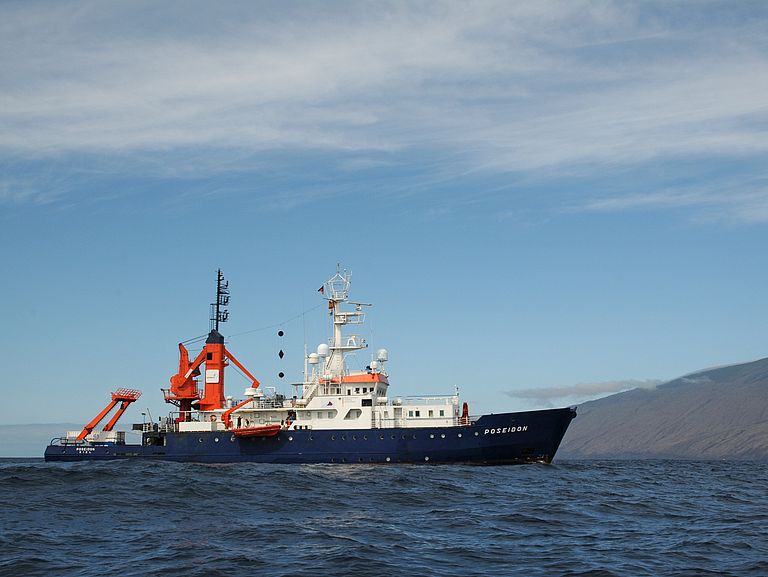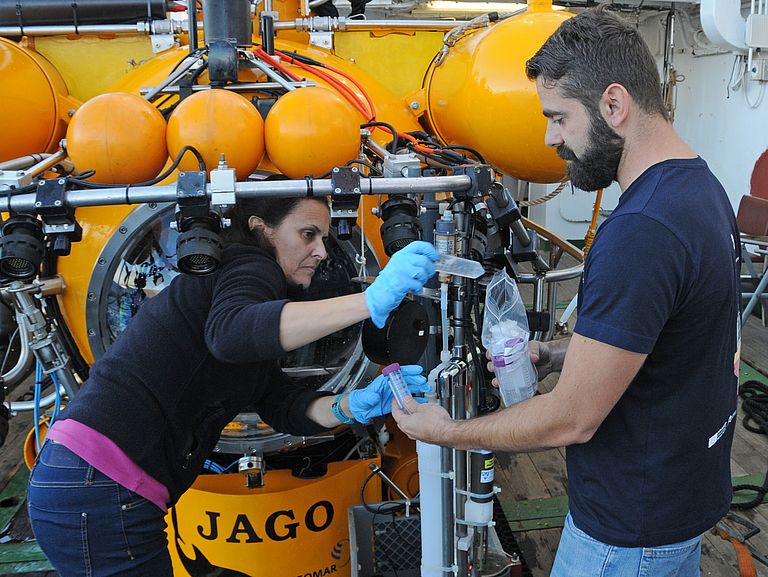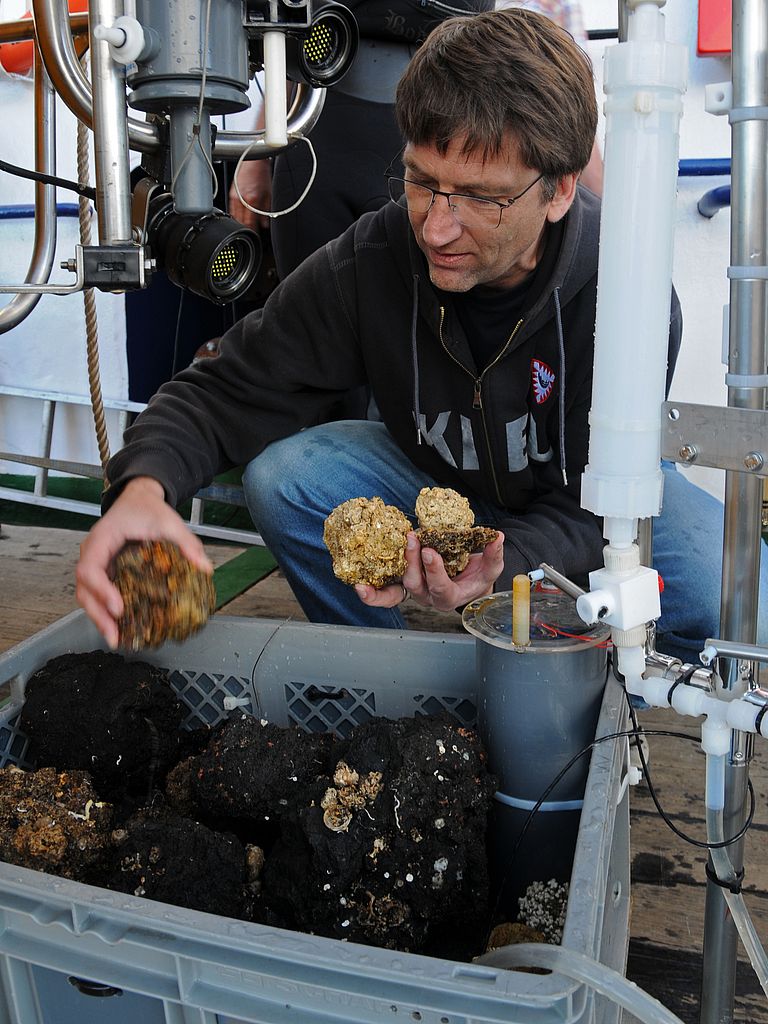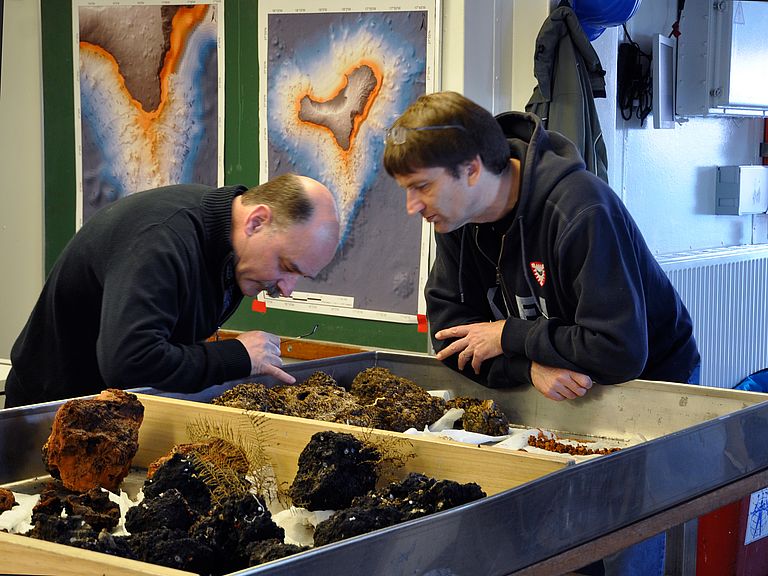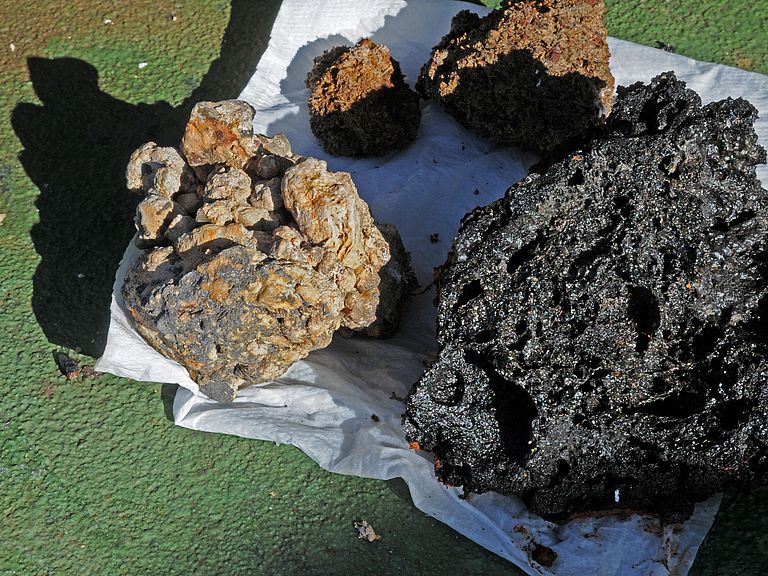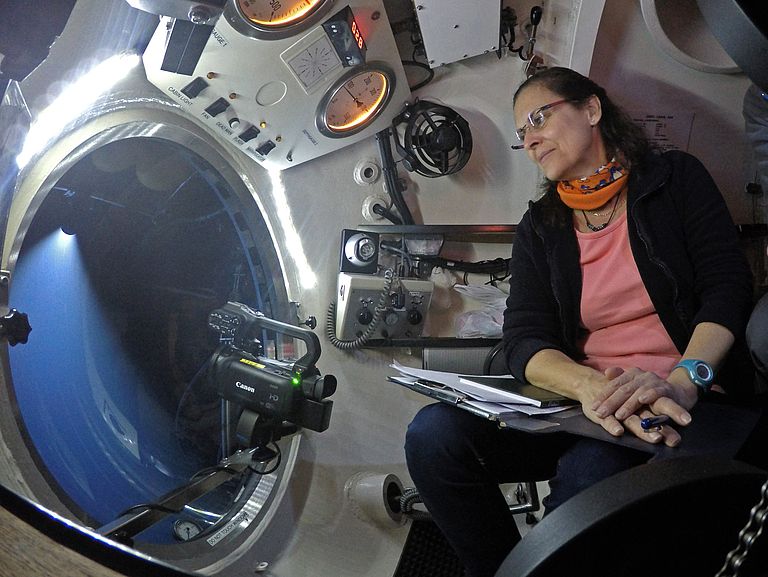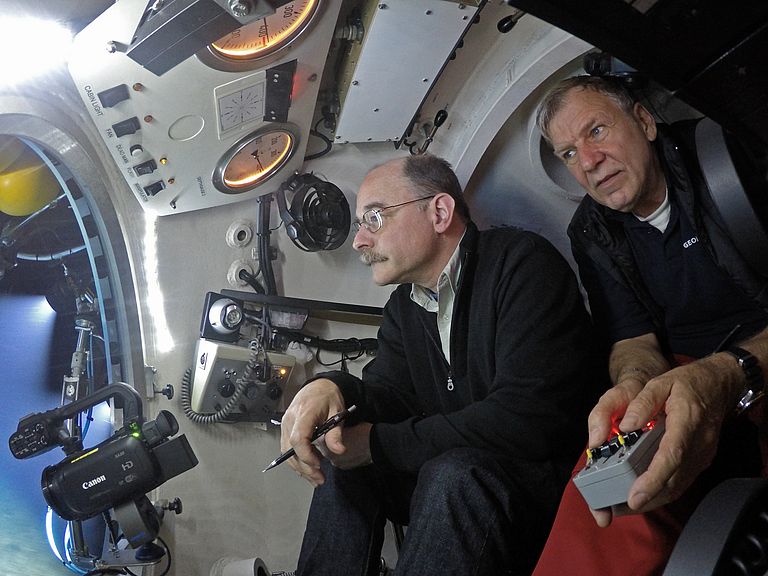Submersible JAGO explores submarine volcano at El Hierro
Spanish-German cooperation provides insight into a seismologic hotspot
The youngest island of the Canarian archipelago, El Hierro, currently is the most active one: For the last 500 years, no volcanic activity had been reported. But on October 10, 2011, a new volcano erupted offshore at a distance of two kilometres from the village of La Restinga. Intensive research was carried out immediately after the eruption, motivated by concerns that the new submarine volcano could pose a significant threat to the island. But only just more than four years later, scientists got first-hand insights. During the POSEIDON expedition POS494/2 (February 7-15, 2016) led by GEOMAR Helmholtz Centre for Ocean Research Kiel, they documented the evolution of the eruption site and the continuing hydrothermal activity, sampled fluids and other volcanic and hydrothermal products at their source with Germany’s only manned research submersible JAGO.
“The VOLCANO project has monitored the volcanic unrest of El Hierro since the eruption in October 2011. But on the recent expedition, we benefitted from the unique opportunity to assess the ongoing activity at the seafloor using the submersible JAGO”, Prof. Juana Magdalena Santana Casiano resumes. The chemical oceanographer from the Instituto de Oceanografía y Cambio Global at the University of Las Palmas de Gran Canaria (ULPGC) has studied physical-chemical perturbations caused by the submarine volcano that had triggered significant alterations to the activity and composition of local plankton communities. “Our findings highlight the potential role of this degasification stage as a natural ecosystem-scale experiment for the study of the effects of global change stressors on marine environments.”
In 2014, operations with the remotely operated vehicle (ROV) Liropus 2000 from the Instituto Español de Oceanografía (IEO) documented what appeared to be extensive deposits of iron-oxide crusts, bacterial mats and low-temperature venting close to the summit of the volcano. But in 2015, the plume of gas and highly acidic water shifted to the southeast of the summit area. It is now focused in a young depression documented on the upper flank of the volcano. Fresh volcanic glass in the crater sampled with JAGO during the recent expedition indicates that this is the youngest feature of the volcano.
On their JAGO dives, Prof. Santana Casiano and Dr. Fraile Nuez, observed the exact nature of this secondary crater for the very first time. According to the new observations, it is characterized by very fresh ash and scoria coated in iron oxides. Warm water of up to 39 degrees Celsius is emitted through the bottom of the crater over an area of several 100 square meters, with more focused discharge occurring at smaller vents with five centimetres high chimneys. A thin coating of bacteria occurs on all surfaces around the vents, and the water above the crater is clouded by a milky white plume from the broad areas of venting.
“Since the volcano has started its new degasification stage three years ago, we have registered significant physical-chemical anomalies in the water column. JAGO allowed us to corroborate our first findings and to witness the process that created these irregularities with our own eyes. Even more importantly, we were able to measure their origins”, Dr. Fraile Nuez from the IEO explains.
Water, gas and rock samples are now analysed in the home laboratories of the participating institutions and maps of the seafloor refined. The secondary crater investigated with JAGO shows a maximum of physical-chemical anomalies at the moment. But the causes of the activity are still uncertain. GEOMAR, IEO and ULPGC are cooperating closely to find out more about the processes at the bottom of the sea.
“The new findings show that since the crisis of 2011, the volcano has been bathed in warm water as the subvolcanic magma cools”, Prof. Mark Hannington, marine geologist at GEOMAR and chief scientist of the POS494/2 expedition concludes. “Thus it is important to continue monitoring the volcano to assess the impact of this ongoing activity.“
Video "Submersible JAGO explores the submarine volcano at El Hierro"
Links:
Plataforma Oceania de Canarias (PLOCAN)
University of Las Palmas de Gran Canaria (ULPGC)
Instituto Español de Oceanografía, Centro Oceanográfico de Canarias (IEO)
The VULCANO project
Images:
Recovery of research submersible JAGO after a dive off El Hierro. Photo: Maike Nicolai, GEOMAR
Research vessel POSEIDON at El Hierro. Photo: Maike Nicolai, GEOMAR
Prof. Juana Magdalena Santana Casiano (ULPGC) und Dr. Eugenio Fraile Nuez (IEO) tap gas and water samples after a JAGO dive. Photo: Maike Nicolai, GEOMAR
Dr. Sven Petersen collects rock samples of the submarine volcano from JAGO's sampling basket. Photo: Maike Nicolai, GEOMAR
Prof. Mark Hannington and Dr. Sven Petersen with rock samples from the submarine volcano. Photo: Maike Nicolai, GEOMAR
Rock samples from the submarine volcano. Photo: Maike Nicolai, GEOMAR
Prof. Juana Magdalena Santana Casiano (ULPGC) inside JAGO. Photo: JAGO-Team, GEOMAR
Prof. Mark Hannington ad JAGO pilot Jürgen Schauer (GEOMAR) inside JAGO. Photo: JAGO-Team, GEOMAR
TV footage is available on request.
Contact:
Maike Nicolai (GEOMAR Communication & Media), Phone: +49 431/600-2807, presse(at)geomar.de
